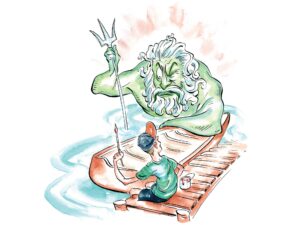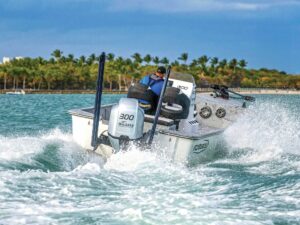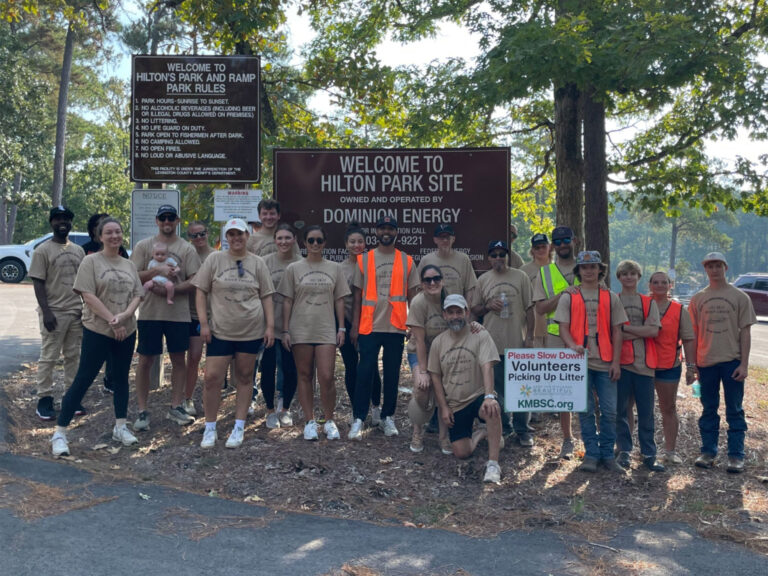
If a large or injured member of your crew fell overboard, could you get them back into the boat? Even a modest-size person is slippery when wet and thus hard to grab. It’s a problem for which there are no easy or all-purpose answers. Sadly, in some situations, failure to retrieve a person in the water could result in death or grievous injury. In this month’s Quick Study, we’ll take a look at potential solutions to the challenge of getting a man overboard (MOB) back aboard.
Steppin’ Out
Even easier for a mildly injured victim than climbing a vertical ladder is reboarding the boat using a center-rail dive ladder such as those popularized by Armstrong Nautical Products. This type of ladder mounts and removes quickly onto a bracket installed on the boat’s transom. These ladders protrude at a gentle angle and offer broad, flat rungs. Using one is somewhere between a ladder and a set of steps. A groggy or winded person could more readily use this type of ladder (prices start at $240, armstrongnautical.com).
Lifesling
Developed by the Sailing Foundation (thesailingfoundation.org) some 40 years ago, the Lifesling ($227.99, westmarine.com) is a padded harness attached to 125 feet of floating poly line that can be thrown, towed or handed to a person in the water. With the use of 5-to-1 block and tackle ($379.99, westmarine.com) secured to a cabin top or fishing tower (or in dire straits, a cleat on the opposite side of the boat from the victim), it allows you to haul in the MOB. Swim platforms, boarding doors and vertical attachment points make using this harness easier.
Parbuckle
Sailors can create a parbuckle using spare sails, but powerboaters might use a bed sheet or tarp. Secure two corners of the tarp to your boat’s cleats or rails. Tie long lines on the outboard corners. Maneuver the victim on top of the section of tarp draped in the water. Now haul in on the corner lines and roll the MOB up and in. You may need a helper, or have a come-along tool or lifting tackle available. Maybe run the rode from an anchor windlass aft and turn it around a seat base or stanchion.
Self-Help
Sometimes a person who has fallen overboard is not hurt. But they may be but too old or too weak to pull themselves up on the unfortunately all-too-common two-step boarding ladder. So, consider adding extra steps so your ladder reaches down deeper in the water. One example of two- and three-step ladder extensions is CLR Marine’s Extend Your Step ($99 and $129 respectively, clrmarine.com). Folding transom steps, as referenced in this month’s Weekend Workbook, are another solution.
Read Next: Electronics for Man Overboard Alert
Get a Grip
As mentioned earlier, a wet and possibly injured mate doesn’t present the best of handholds. If the person in the water is wearing a good-quality life jacket, you might grab its straps or secure a dock line to it to aid in grip. (Bet you never thought we’d advocate wearing a life jacket for getting out of the water.) In true life-and-death situations, such as profuse bleeding, grabbing hair, ears or whatever you can are all fair game. Get ’em in the boat!









